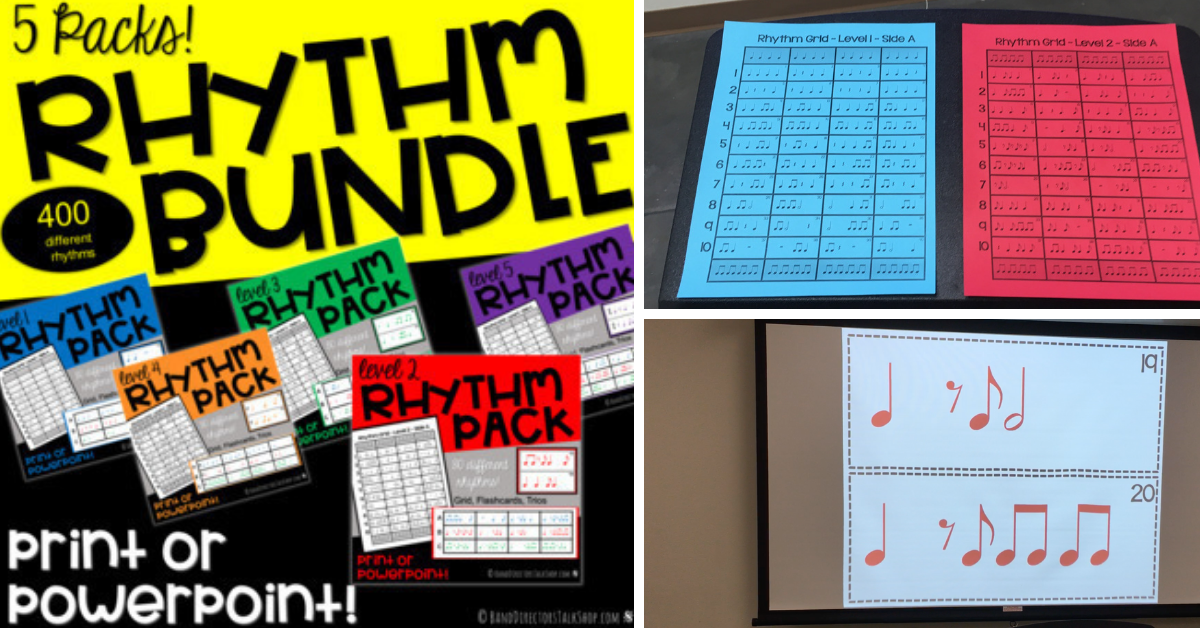Does your band lose focus when they’ve been working on the same music for a while? Do you feel like you ask them to get quiet over and over? Are you about to ‘go old school band director’ on them? This may be a better solution.

What is a silent band rehearsal?
A positive reinforcement of how they are supposed to act in rehearsal. Instead of asking students over and over to be quiet (and creating a nagging, negative environment), this allows you to have a rehearsal in true silence. It should feel like a game, but in an intense and focused way.
Rules of the Game:
- No one talks – INCLUDING the director
- Have a pre-set amount of time.
- If anyone talks (including the director) there is a consequence for that person.
Rule 1 – No one talks – Including the director:
What!? Wait a minute! I’m the most important person in the room. What do you mean I don’t get to talk!? It’s one thing for the kids not to talk. That’s fine. But how will they learn if I don’t talk? (Wink)
Often directors talk way too much. And what’s the most common time students talk? When the director is talking. Complete silence creates an environment where kids just don’t talk. You’ll be amazed how much will actually get done when you don’t talk either.
So how do you teach them?
Mime.
Conduct.
Demonstrate on your instrument – a lot.
Get creative.
Have fun.
Have a rehearsal plan as to how you will get your point across.
Examples:
If you want kids to watch better – take your glasses off, point at them, point at you, point at your eyes. Then start again.
Key signature – take your keys out of your pocket and shake them.
Wrong note – show them the right fingering – (2nd finger down etc.)
Mark it – have a pencil & show them the pencil, pretend to mark something.
Style – demonstrate on your instrument, show it with your conducting
Dynamics – overdo the conducting, be overly animated
To start at measure 43, put up fingers 4 &3 – right hand shows 4, then left hand shows 3. Do it a few times to be sure they all have it.
To start at letter A – write it on the board. Point at it. Pat the board hard. Point at it again. Pat the board again. Look at them like – ‘Ya got it?’ Point again. Then start. Make it a game. Be a little silly.
Write it down – If there is something you want to say so badly you can hardly stand it, write it down and discuss it after the ‘silent rehearsal’ is over or the next day.
Rule 2 – Have a pre-set amount of time:
You need to know your band. The first time you do this, start with 10 minutes and set a timer. Then if it goes well, try 20 minutes the next time.
Use the Silent Rehearsal very sparingly.
Maybe 4-5 times a year and spread them out. By the 3rd or 4th time you might try to extend the time to cover most of the rehearsal.
Leave time for discussion at the end:
Ask the students:
How focused were you?
How focused was the rehearsal?
Did we get more done?
The real goal of a Silent Rehearsal is for the kids to realize that the more focused they are, the more they get done. (And to make the director realize that the less the director talks, the more they get done.)
Rule 3 – If anyone talks (including the director) there is a consequence.
If you can keep complete silence – absolute still – it creates an environment where kids just don’t talk.
Because this is all about staying positive, you don’t want to have to use a consequence. But if you say, for example, “if you talk you’ll have to leave the rehearsal” then be ready to follow through. Even if it’s you that talks. Have an assistant ready to come take over. And don’t talk so you don’t have to suffer the consequence!
When should you have a Silent Rehearsal?
- After you’ve established good discipline. You have to have a rapport with the kids. If being quiet is not part of your normal expectation, this may not work for you.
- After the students know your non-verbal conducting cues – how you start them, how you stop them etc. without talking.
- After they’ve learned a piece fairly well. That way you’ll need to stop less.
- When you need a ‘reset button.’ If you are getting frustrated with the quality of rehearsal. If it’s getting monotonous. If you feel like you’re dragging them through rehearsal. Hit the ‘reset’ button with a silent rehearsal.
I hope that having a silent band rehearsal helps keep you from throwing stands, finding yourself on high blood pressure medication, or being on a first name basis with a local bartender.
This article was contributed by BJ Sayger. He is in his 17th year of teaching middle school band in Texas.
Related Reading:
The Crayon Analogy (for Band) (Also by BJ Sayger)
What is Google Classroom?
Teach Sight-Reading with TAKES (Quick Tip) Quick Tip
If you would like to receive our weekly newsletter, sign up here.
Don’t forget to like us on Facebook too!
Learn. Share. Inspire.
BandDirectorsTalkShop.com








Leave a Reply
You must be logged in to post a comment.